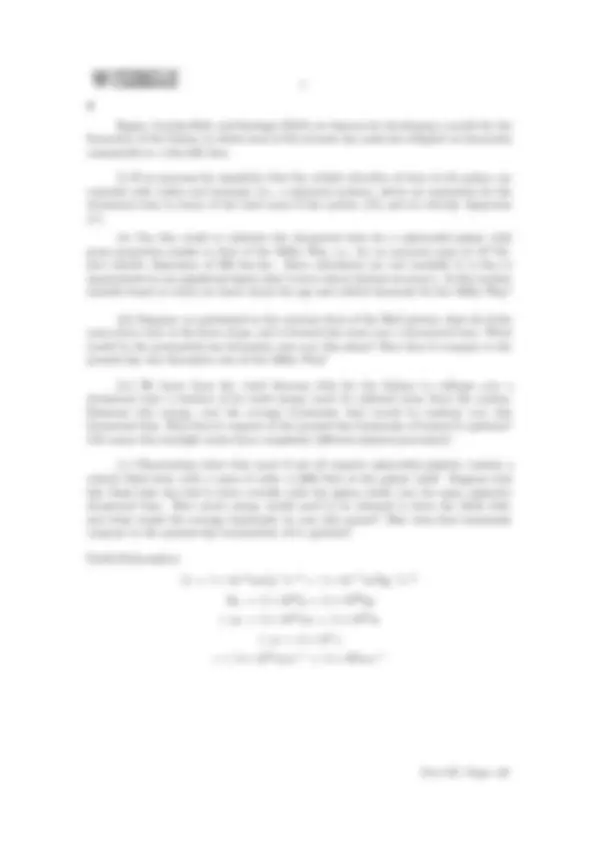





Study with the several resources on Docsity

Earn points by helping other students or get them with a premium plan


Prepare for your exams
Study with the several resources on Docsity

Earn points to download
Earn points by helping other students or get them with a premium plan
Community
Ask the community for help and clear up your study doubts
Discover the best universities in your country according to Docsity users
Free resources
Download our free guides on studying techniques, anxiety management strategies, and thesis advice from Docsity tutors
The instructions and questions for part iii paper 60 of the mathematical tripos exam at the university of cambridge, focusing on the topics of galaxies and stellar evolution. The paper includes both theoretical and problem-solving questions, covering topics such as vertical stellar distribution in galaxies, chemical evolution of stars and gas, and dynamical time in galaxies. Students are required to bring handwritten class notes and are not allowed to start reading the questions until instructed by the invigilator.
Typology: Exams
1 / 5

This page cannot be seen from the preview
Don't miss anything!




Thursday, 3 June, 2010 1:30 pm to 4:30 pm
Candidates may bring handwritten class notes only into the examination. Attempt no more than THREE questions. There are FOUR questions in total. The questions carry equal weight.
Cover sheet None Treasury Tag Script paper
You may not start to read the questions printed on the subsequent pages until instructed to do so by the Invigilator.
Consider a self-gravitating disc of stars with vertical velocity dispersion σ, which for simplicity can be considered to be constant.
(i) Show that the vertical distribution of stellar density falls off exponentially, with an e-folding scale height:
h =
σ^2 2 πGΣ
where Σ is the mass surface density of the disc (the volume density integrated vertically through the disc).
(ii) The gas discs of spiral galaxies are observed to have a vertical velocity dispersion that is virtually constant with radius. Derive an expression for the expected radial dependence of the gas scale height, assuming that the equation above applies to the gas (but with the surface density Σ dominated by the stars). How does this compare to the radial dependence of h for the stellar discs?
(iii) Observations of edge-on galaxies show that the radial behaviour of the gas scale height predicted above applies over a limited range of radii, but breaks down badly at other radii. When will the assumptions underlying the derivation of the equation in part (i) break down for this problem?
(iv) Describe how measurements of the vertical distribution and velocity dispersion of stars in the Galactic disc could be used to place constraints on the fraction of dark matter in the disc.
Part III, Paper 60
Eggen, Lynden-Bell, and Sandage (ELS) are famous for developing a model for the formation of the Galaxy in which most of the present day material collapsed on timescales comparable to a free-fall time.
(i) If we presume for simplicity that the orbital velocities of stars in the galaxy are constant with radius and isotropic (i.e., a spherical system), derive an expression for the dynamical time in terms of the total mass of the system (M ) and its velocity dispersion (σ).
(ii) Use this result to estimate the dynamical time for a spheroidal galaxy with gross properties similar to that of the Milky Way, i.e., for an assumed mass of 10^11 M⊙ and velocity dispersion of 200 km/sec. Since calculators are not available it is fine to approximate to one significant figure (don’t worry about decimal accuracy). Is this number sensible based on what you know about the age and orbital timescale for the Milky Way?
(iii) Suppose, as postulated in the extreme form of the ELS picture, that all of the mass above were in the form of gas, and it formed into stars over a dynamical time. What would be the primordial star formation rate over this phase? How does it compare to the present-day star formation rate of the Milky Way?
(iv) We know from the virial theorem that for the Galaxy to collapse over a dynamical time a fraction of its total energy must be radiated away from the system. Estimate this energy, and the average luminosity that would be emitted over this dynamical time. How does it compare to the present-day luminosity of typical L∗ galaxies? (Of course this starlight arises from completely different physical processes!)
(v) Observations show that most if not all massive spheroidal galaxies contain a central black hole, with a mass of order 1/1000 that of the galaxy itself. Suppose that this black hole also had to form coevally with the galaxy itself, over the same (galactic) dynamical time. How much energy would need to be released to form the black hole, and what would the average luminosity be over this period? How does that luminosity compare to the present-day luminosities of L∗ galaxies?
Useful Information:
G = 7 × 10 −^8 cm^3 g−^1 s−^2 = 7 × 10 −^11 m^3 kg−^1 s−^2 M⊙ = 2 × 1033 g = 2 × 1030 kg 1 pc = 3 × 1018 cm = 3 × 1016 m 1 yr = 3 × 107 s c = 3 × 1010 cm s−^1 = 3 × 108 m s−^1
Part III, Paper 60
Mini essay questions: Explain in no more than two or three sentences each the astrophysical explanations for each of these observations of galaxies and stellar populations. You may include equations if you wish but it is not required.
(i) Old stars in the Galactic disc at a given radius lag in rotation behind younger stars.
(ii) A census of the low-mass stellar populations within a few tens of parsecs of the Sun provides a fair sampling of the Galactic disc at 7 kpc radius, even though the volume samples only a tiny fraction of the disc.
(iii) A galaxy with weak metal absorption lines in its spectrum is not necessarily more metal-poor than a galaxy with strong metal lines in its spectrum.
(iv) Present-day elliptical galaxies have a significantly higher mass-to-light ratio than spiral or irregular galaxies.
(v) The age distribution of open clusters in the Milky Way is strongly peaked toward ages of less than a Gyr, quite distinct from either the globular clusters in the Galactic halo or the field stars in the Galactic disc.
(vi) Massive elliptical galaxies tend to have boxy cos 4θ components to their azimuthal luminosity profiles, in the opposite sense to the cos 4θ components in low-mass elliptical galaxies.
(vii) The strongest constraints on the distribution of dark matter in galaxies comes from studies of atomic hydrogen, rather than from kinematics of stars.
(viii) Measurements of the masses of black holes in the centres of elliptical galaxies are much easier to obtain for low-mass galaxies, even though the masses of the central black holes are much lower.
Part III, Paper 60